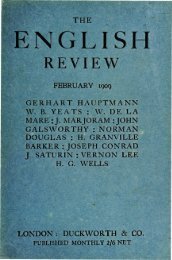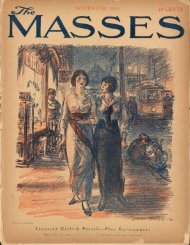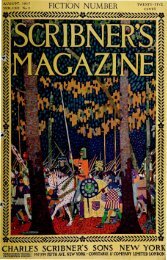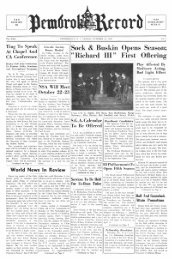View PDF - Brown University Library
View PDF - Brown University Library
View PDF - Brown University Library
- No tags were found...
You also want an ePaper? Increase the reach of your titles
YUMPU automatically turns print PDFs into web optimized ePapers that Google loves.
10 In Moroccomade grave, there are ritual movements ofmuffled figures and wailings of a funeralhymn half drowned by the waves. Nearus, on a fallen headstone, a man with athoughtful face sits chatting with twofriends and hugging to his breast a tinyboy who looks like a grasshopper in hisgreen caftan; a little way off, a solitaryphilosopher, his eye fixed on the sunset,lies on another grave, smoking his longpipe of kif.There is infinite sadness in this sceneunder the fading sky, beside the coldwelter of the Atlantic. One seems to benot in Africa itself, but in the Africa thatnorthern crusaders may have dreamed ofin snow-bound castles by colder shores ofthe same ocean. This is what Moghrebmust have looked like to the confusedimagination of the Middle Ages, to Normanknights burning to ransom the HolyPlaces, or Hansa merchants devising, insteep-roofed towns of Barbary, and thelong caravans bringing apes and goldpowderfrom the south.Inside the gate of the Kasbah onecomes on more waste land and on otherwalls—for all Moroccan towns are enclosedin circuit within circuit of battlementedmasonry. Then, unexpectedly, agate in one of the inner walls lets one intoa tiled court enclosed in a traceriedcloister and overlooking an orange-grovethat rises out of a carpet of roses. Thispeaceful and well-ordered place is theinterior of the Medersa (the college) ofthe Oudayas. Morocco is full of thesecolleges, or rather lodging-houses of thestudents frequenting the mosques; for allMahometan education is given in themosque itself, only the preparatory workbeing done in the colleges. The mostbeautiful of the Medersas date from theearlier years of the long Merenid dynasty(1248-1548), the period at which Moroccanart, freed from too distinctivelySpanish and Arab influences, began todevelop a delicate grace of its own as farremoved from the extravagance of Spanishornament as from the inheritance ofRoman-Byzantine motives that the firstMoslem invasion had brought with itfrom Syria and Mesopotamia.These exquisite collegiate buildings,though still in use whenever they are neara well-known mosque, have all fallen intoa state of sordid disrepair. The MoroccanArab, though he continues to build—and fortunately to build in the old tradition,which has never been lost—has, likeall Orientals, an invincible repugnance torepairing and restoring, and one afteranother the frail exposed Arab structures,with their open courts and badly constructedterrace-roofs, are crumbling intoruin. Happily the French Governmenthas at last been asked to intervene, andall over Morocco the Medersas are beingrepaired with skill and discretion. Thatof the Oudayas is already completely restored,and as it had long fallen into disuseit has been transformed by the Ministryof Fine Arts into a museum ofMoroccan art.The plan of the Medersas is alwaysmuch the same: the eternal plan of theArab house, built about one or more arcadedcourts, with long narrow roomsenclosing them on the ground floor, andseveral stories above, reached by narrowstairs, and often opening on finely carvedcedar galleries. The chief difference betweenthe Medersa and the private house,or even the fondak* lies in the use towhich the rooms are put. In the Medersas,one of the ground-floor apartmentsis always fitted up as a chapel, and shutoff from the court by carved cedar doorsstill often touched with old gilding andvermilion. There are always a few studentspraying in the chapel, while otherssit in the doors of the upper rooms, theirbooks on their knees, or lean over thecarved galleries chatting with their companionswho are washing their feet at themarble fountain in the court, preparatoryto entering the chapel.In the Medersa of the Oudayas, thesenative activities have been replaced bythe lifeless hush of a museum. The roomsare furnished with old rugs, pottery,brasses, the curious embroidered hangingswhich line the tents of the chiefs, andother specimens of Arab art. One roomreproduces a barber's shop in the bazaar,its benches covered with fine matting, thehanging mirror inlaid with mother-ofpearl,the razor-handles of silver niello.The horseshoe arches of the outer gallerylook out on orange-blossoms, roses and the* The Moroccan inn or caravanserai.










